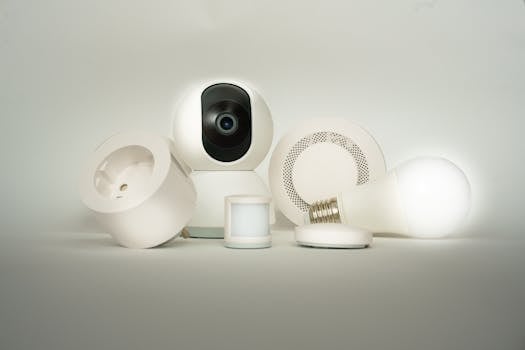Embrace the Future: The Ultimate Guide to Smart Home Tech
Takeaways: Smart home technology is revolutionizing the way we live, offering enhanced convenience, security, and energy efficiency. Key components include voice assistants, smart lighting, and home automation systems that make daily tasks simpler and more efficient.
In today’s fast-paced world, the integration of technology into our daily lives has become essential. Smart home technology is at the forefront of this revolution, offering a plethora of devices and systems designed to enhance our living spaces. From voice assistants that respond to our commands to smart lights that adapt to our moods, these innovations are not merely luxuries; they are tools that improve convenience, security, and energy efficiency. In this guide, we will delve into the various aspects of smart home tech, exploring its benefits, key components, and how to get started.
The Rise of Smart Home Technology

Smart home technology encompasses a wide range of devices, including:
- Voice Assistants: These AI-powered devices, such as Amazon Alexa, Google Assistant, and Apple Siri, allow users to control their smart home systems using voice commands. They can answer questions, play music, set reminders, and even control other smart devices.
- Smart Lights: Smart lighting systems enable users to adjust brightness and color through their smartphones or voice commands. They can also be programmed to turn on and off at specific times, enhancing security when homeowners are away.
- Smart Thermostats: These devices learn your heating and cooling preferences, optimizing energy usage and reducing utility bills.
- Smart Security Systems: These systems offer features such as video doorbells, motion sensors, and surveillance cameras that can be monitored remotely, providing peace of mind to homeowners.
Benefits of Smart Home Technology

1. Enhanced Convenience
Smart home devices simplify daily tasks and routines. Imagine coming home to a well-lit house with your favorite music playing, all triggered by your arrival. Voice assistants can manage your calendar, set reminders, and help you with tasks around the house without lifting a finger.
2. Increased Security
Smart security systems offer homeowners greater control over their property. With features like remote monitoring, alerts for unusual activity, and the ability to lock or unlock doors from anywhere, homeowners can feel more secure and protect their assets effectively.
3. Energy Efficiency
Smart home technology can significantly reduce energy consumption. Smart thermostats learn your heating and cooling habits, while smart lights can be programmed to turn off when not in use. These features not only save money on utility bills but also contribute to a more sustainable lifestyle.
Getting Started with Smart Home Tech

1. Assess Your Needs
Identify which areas of your home could benefit from automation. Whether it’s enhancing security, improving energy efficiency, or adding convenience, understanding your needs will help you choose the right devices.
2. Start Small
Begin with a few key devices, like a smart speaker or smart bulbs. Experiment with their features and gradually expand your smart home ecosystem as you become more comfortable.
3. Ensure Compatibility
Before purchasing devices, ensure they are compatible with your existing systems and other smart devices. Many brands offer apps that allow for centralized control, simplifying management.
Conclusion




